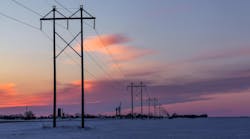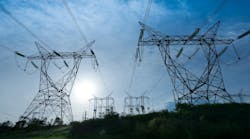Fingrid has launched the planning of an extensive capital investment project together with the Estonian transmission system operator Elering concerning an electricity cable costing 300 million euros between Finland and Estonia. If the opening of the Estonian electricity market makes further progress and the European Union grants an investment subsidy to the project, the cable will be ready in an almost record-short period of time. However, the execution of the project still calls for significant decisions in the Baltic countries.
Preparations for the construction of the cable were started this spring. The high-voltage direct current cable of approx. 140 kilometres is due to be ready in an expedited schedule in 2014 or even at the end of 2013.The year of completion is influenced above all by the potential investment subsidy granted by the European Union and by the opening of the electricity markets in the Baltic countries.
“The cable project is well under way. An application for a subsidy of 100 million euros was submitted to the European Union in July. The environmental impact assessment procedure is in good progress both on land and at sea, with for example the seabed surveys already being completed, which enables a swift schedule,” said Fingrid’s President Jukka Ruusunen today in Fingrid’s Grid Day when assessing the topical outlook for the Finnish transmission system operator.
Will the Baltic market open?
The 650-MW EstLink2 electricity cable planned between Finland and Estonia is a very important infrastructure project in the development of the electricity market in the region of the Baltic Sea. The construction of the cable requires that the electricity market in Estonia and the other Baltic countries works in accordance with the EU’s market rules.
“However, the question remains whether the Baltic electricity market will open. The prime ministers of the Baltic countries have actually given their political backing to this. The Estonian Government has prepared a government bill to open the Estonian wholesale market for electricity, and the Estonian Parliament will probably make a decision in the matter in the autumn. In practice, the opening of the market can be prevented by the rules applied to the present EstLink1 cable between Finland and Estonia. If the capacity of the EstLink1 connection is not made available to the Nordic electricity exchange, the exchange cannot expand to the Baltic countries. The ball is now in the court of EstLink1’s present owners,” Ruusunen said.
The objective of the European energy policy is to fight climate change and to guarantee competitive energy prices and energy security. EstLink2 is a way of facilitating the Baltic electricity market and integrating it with the Nordic electricity market.
“According to grid analyses shared by the Baltic countries, Poland, Sweden and Finland, reinforcements in electricity transmission connections are required most urgently between Finland and Estonia. Connections to the Baltic countries are also needed from Poland and Sweden. Developing the electricity grid in the Baltic Sea region will add to the options available to electricity supply and to the functioning of the market.”
The operating environment of the Finnish transmission system operator is becoming more international than before. The grid plan for the Baltic Sea region together with the opening of the Baltic electricity market are part of more comprehensive European grid co-operation, with the objective of attaining a European transmission grid for electricity. Entso-E, the new co-operation organization of the European transmission system operators, started operations in early July.
“Entso-E is to draw up both technical guidelines and market rules together with the EU and authorities. The goal is to make the market work and electricity flow from one country to another so that electricity is produced as efficiently as possible within the EU. Transmission system operators can promote the functioning of the market by removing transmission congestions between countries and by advancing the transparency of the market,” Jukka Ruusunen said.
According to Jukka Ruusunen, the expansion of the electricity market will add to competition and improve security of supply. The scope of the Finnish electricity market is approx. 90 terawatt hours per year, the Nordic market almost 400 terawatt hours, and the European market as much as 3,000 terawatt hours.
Extensive grid construction program in Finland reflected in scenery
Maintaining a high system security and promoting the functioning of the electricity market call for extensive grid investments within Finland and on the cross-border transmission connections. Fingrid is making capital investments totalling 1,600 million euros in the transmission grid and reserve power between 2009 and 2019. On an annual level, this will mean investments of 100 to 200 million euros.
The total construction project producing more than 2,700 km of transmission lines and some 30 new substations will evoke many feelings in various stakeholders. Landowners in Finland have especially discussed the amount of the expropriation compensations for land areas.
“Transmission lines, like roads and railways, represent indispensable infrastructure for society. Fingrid does not make the decisions concerning the compensations, but these decisions are made by an impartial expropriation committee in accordance with the act on expropriation proceedings. The compensations are determined on the basis of issues such as price of agricultural and forest land or future utility values. This guarantees the equal treatment of landowners,” Jukka Ruusunen stated.
He also emphasized that the electricity transmission grid is reinforced on the basis of the Finnish climate and energy strategy. “These grid investments are made so that we can connect new production plants and wind power capacity to the transmission grid. Finland has set an objective to be self-sufficient in terms of electricity production. Some of the investments are related to the ageing of the grid – the oldest part of our grid dates from the 1920s. The oldest section of the grid from Imatra to Turku reached the age of 80 years this year.” Fingrid is renewing this aged line one part at a time. The line was 418 km long originally, and 106 km of it have been modernized to date.

